Ever find yourself gravitating towards PLQ Mall in Paya Lebar rather than City Plaza? Well, one of our readers had recommended Aunty Lily Kitchen, tucked away in the latter. Intrigued, I decided to see what the fuss was about.
Venturing through numerous clothing and jewellery shops in the vintage-looking mall, I eventually located the food court at level 5. It felt like time stood still; nothing had changed since my last visit a couple of years back.

Aunty Lily Kitchen, as the name suggests, is owned by 63-year-old Aunty Lily herself (pictured left) with the assistance of her sister-in-law, who helps with serving customers. Before opening her food stall, Aunty Lily operated a home-based business during the pandemic.

But hold on, there’s another side to this superwoman! She also wears the hat of a hostel owner, providing accommodation for several Indonesian students from LASALLE College of the Arts and NAFA.
“That’s how I got interested and picked up Indonesian cuisine,” Aunty Lily shared.
What I tried at Aunty Lily Kitchen
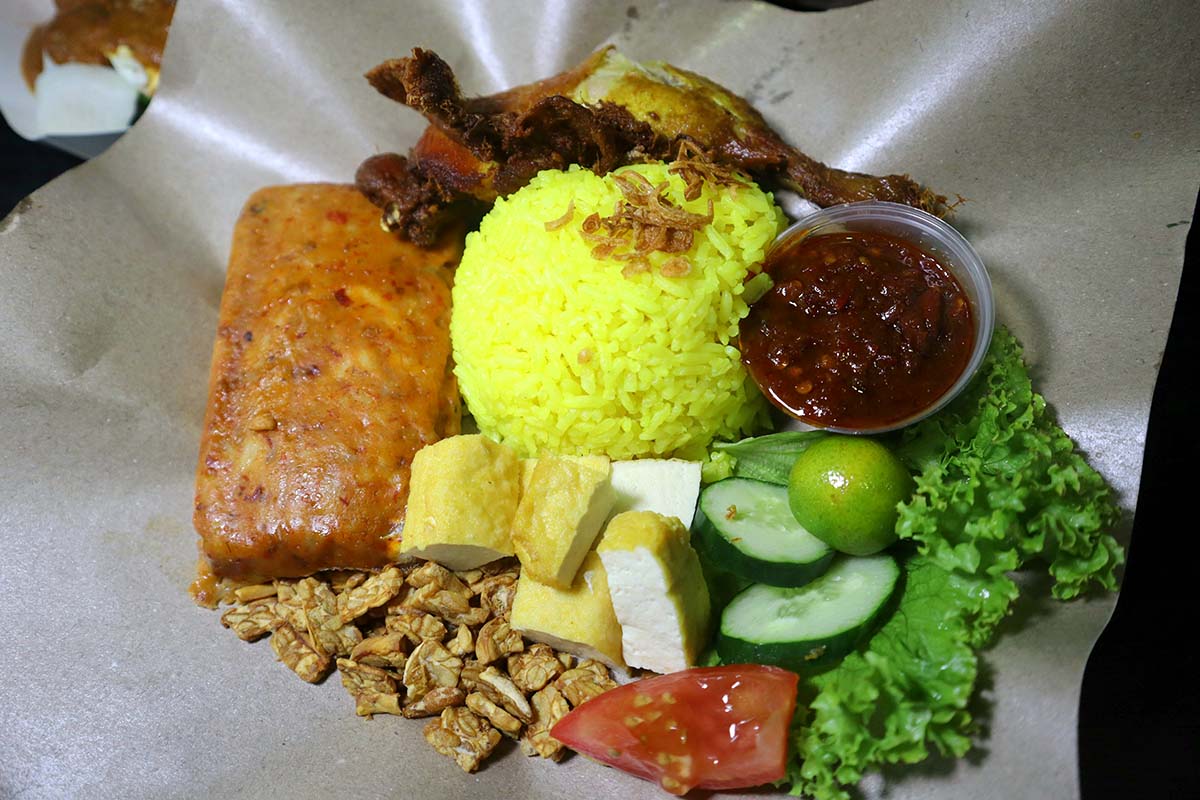
We began with one of Aunty Lily’s signatures, the Ayam Penyet (S$7.90), where I was given a choice between plain or turmeric rice.
The grains of sunshine were topped with fried shallots, surrounded by a piece of fried chicken drumstick, tau kwa, mini fried tempeh bits, a side of veggies and sambal. I also added an entire slab of handmade Otah Otah (S$6.50) to go with it.

I spritzed some calamansi drops onto the chicken before attacking it with my cutlery. As the office crowd hadn’t swarmed in yet, I heard the audible crackle of the chicken skin as I tore it apart. As I took my first bite, the aromatic flavours of turmeric and lemongrass burst in my mouth. Its flesh was also tender and packed full of flavour.

The yellow rice exuded a fragrant aroma and fluffy texture, and when paired with the crispy fried shallots, elevated the experience even more.

I couldn’t believe how Aunty Lily’s handmade otah tasted just like my favourite Muar rendition from Malaysia. It was tasty yet light, and generously stuffed with morsels of mackerel.
Surprisingly, it wasn’t overwhelmingly spicy, much to the delight of my dining partner, who happily indulged in more than one spoonful.

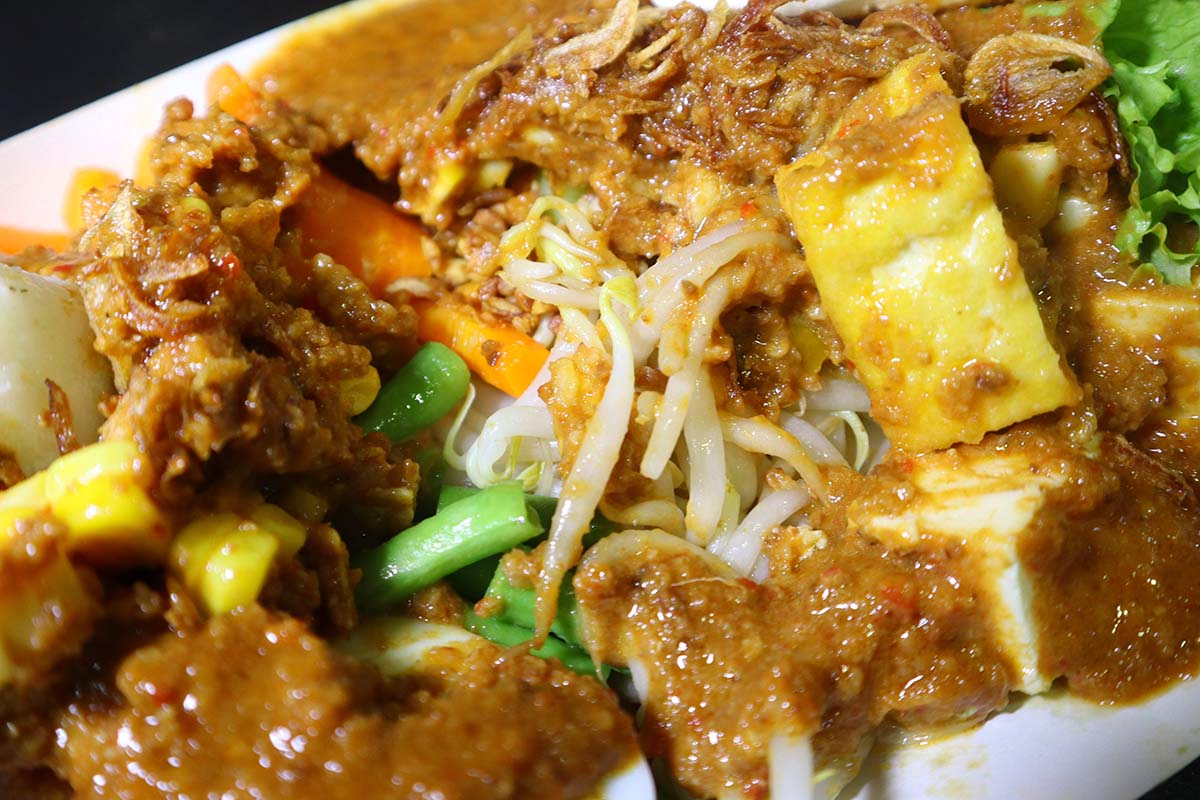
We then jumped to the next dish, the Gado Gado (S$5.50). Rice cakes, tau kwa, potatoes, long beans, corn kernels, sliced carrots, tau geh and cabbage slices were drenched with peanut gravy.
Paris Van Java: Authentic Indonesian cuisine with huge crispy golden brown chicken & tasty noodles in Orchard

The single piece of keropok reminded me of a white and puffed-up version of a roti jala. Unfortunately, it was a little deflated and lacked the desired crispiness— though it did redeem itself with its tasty flavour.
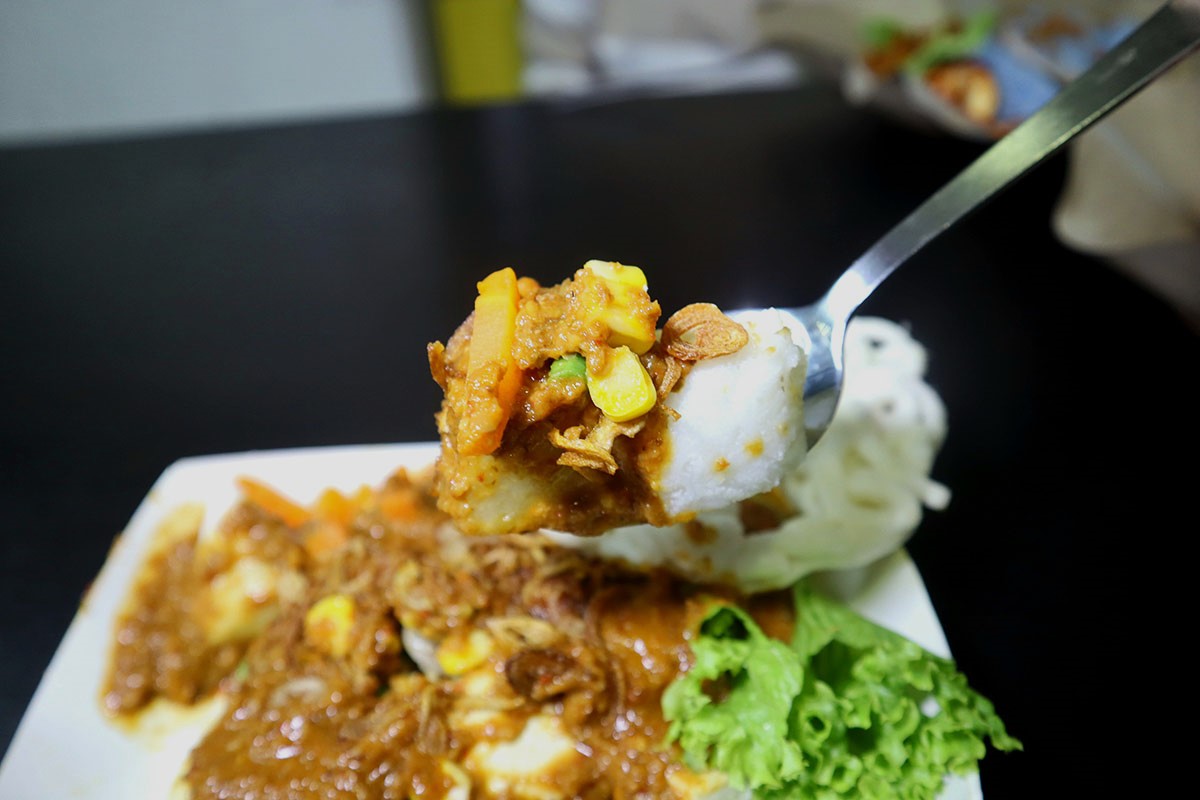
The beansprouts, long beans and corn gave a delightful crunch, creating a playful contrast with the pillowy softness of the rice cakes. The peanut sauce hit the sweet spot with its perfect balance of flavours— I couldn’t find a single thing to gripe about.

For our final dish, we tried another of her signatures, the Nasi Lemak with Beef Rendang (S$7.50). It came with a mound of blue pea rice, beef rendang, egg sambal, peanuts and ikan bilis. From the top, it was a kaleidoscope of colours.

The blue pea rice was cooked to perfection and was beautifully dyed in a light blue tone. It possessed a gentle coconut flavour which wasn’t overwhelming.

The sambal was sweet and mildly spicy with hints of dried shrimp. It was the perfect accompaniment to the rice and egg.
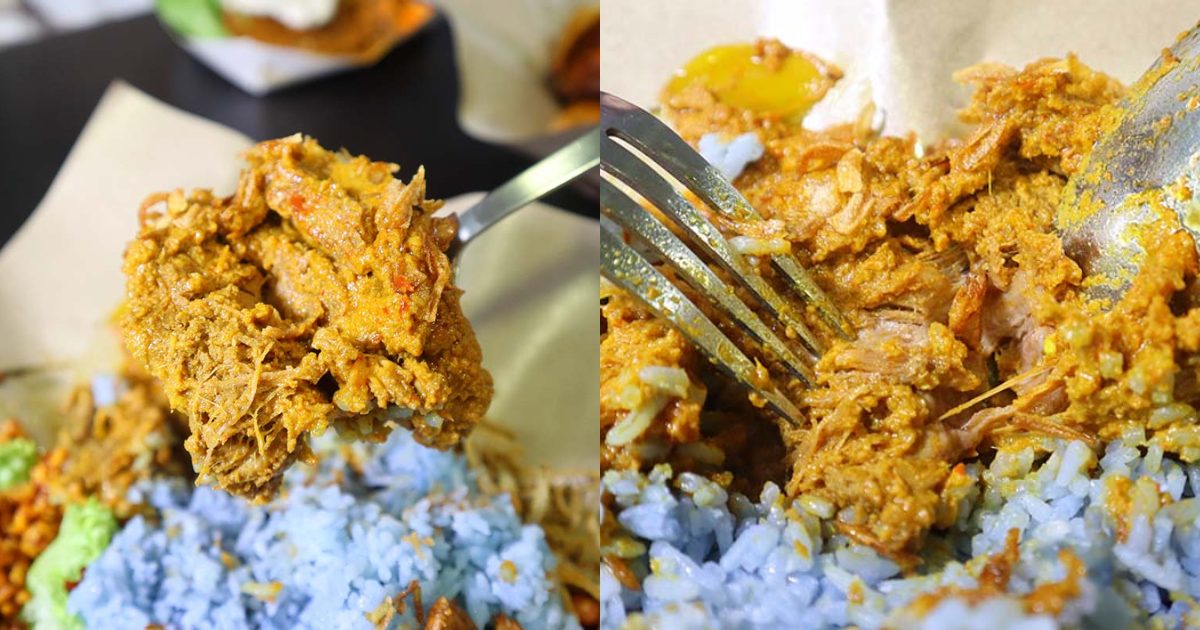
The beef rendang was extremely tender and the meat fibres fell apart easily. Its spices and flavour were spot-on, reminiscent of my Peranakan grandmother’s authentic rendition.

Call me weird, but I’ve been a fan of tempeh from an early age. My late Teochew grandmother would slice them up and deep fry them till crispy. I would then devour them like French fries.
So you can imagine my excitement when I spotted Tempeh Hijau and Chilli Tempeh on the shelf. I happily paid an extra S$1 for each of them.
The Tempeh Hijau was perfumed with the unique flavour of the green chilli sambal. On the other hand, the Chilli Tempeh was stir fried with gula melaka, chilli and garlic. Its taste reminded me of the sweet and spicy tapioca chips snack.

Aunty Lily, whose grandmother is Peranakan, also makes some of the Nyonya kueh which she sells at her stall. They include the Lemper Udang (S$3) and Kueh Kosui (S$3 for 6 pieces).
I packed the Lemper Udang for my breakfast the next day. The hae bee hiam filling was robust and more generous as compared to other mainstream brands outside— definitely worth its slightly steep price.
Final thoughts
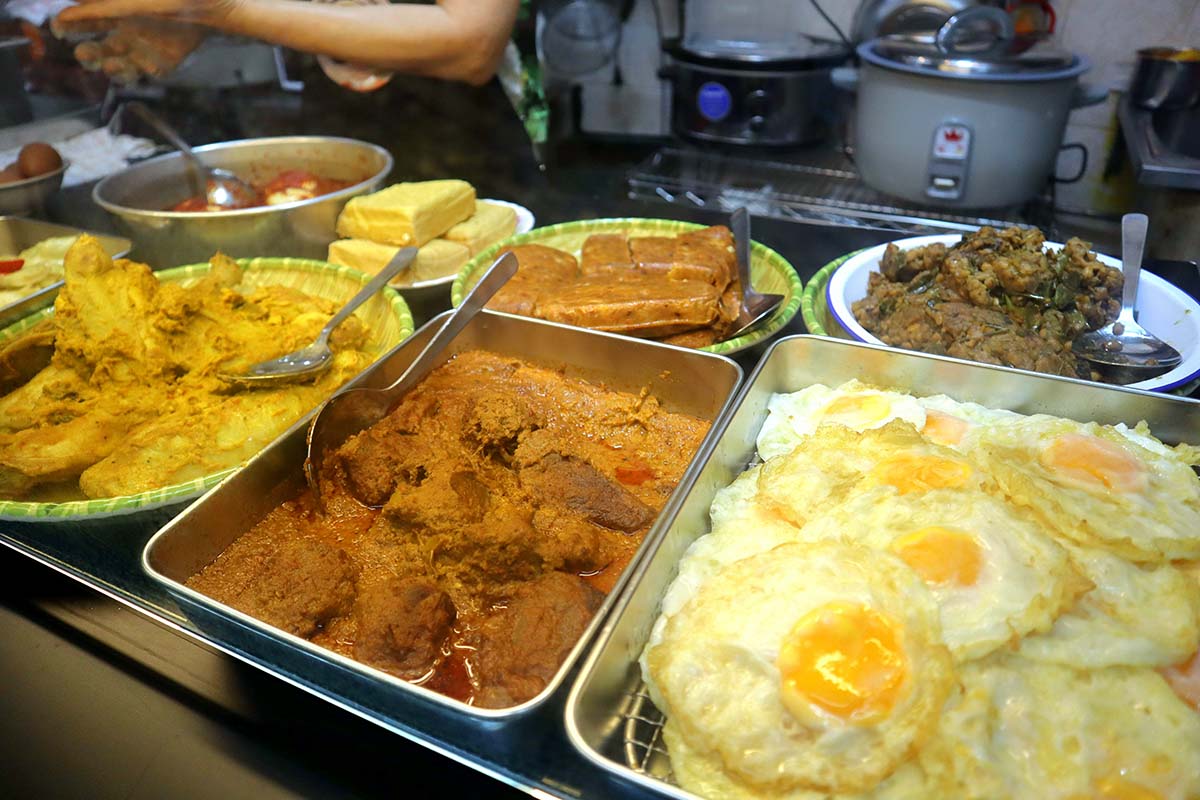
It was a pity that I didn’t get to try Aunty Lily’s Nasi Liwet (S$7). It’s an Indonesian rice dish cooked in coconut milk, chicken broth, salam leaves, lemongrass, and spices. Would it taste like nasi lemak? Who knows?
She only cooks this dish on Sundays, when a large Indonesian community gathers at City Plaza. However, this gives me the perfect reason to return, say hi to Aunty Lily, and enjoy her food once again.
Some stalls make a lasting impression from the very first visit, and Aunty Lily Kitchen is undoubtedly one of them. I’ll be back soon!
Expected damage: S$5.50 – S$16 per pax
Marie’s Lapis Cafe: Hidden gem serving mee siam, buah keluak spaghetti & lapis waffles by Peranakan family
Price: $
Our Rating: 4.5 / 5
Aunty Lily Kitchen
810 Geylang Road, City Plaza, #05-05, Singapore 409286
Price
Our Rating 4.5/5
Aunty Lily Kitchen
810 Geylang Road, City Plaza, #05-05, Singapore 409286
Telephone: +65 8168 7536
Operating Hours: 10am – 7pm (Daily)
